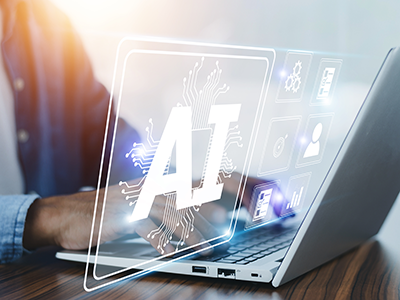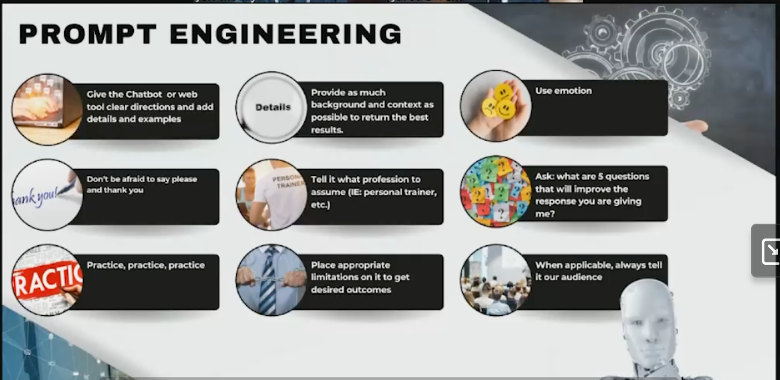AI: On the Cutting Edge of Creativity and Efficiency
Maybe you remember the ELIZA chatbot or when IBM’s Deep Blue defeated the chess whiz Garry Kasparov. You were probably around for the arrival of Siri, the virtual assistant designed to answer our most pressing questions. A common element of these remarkable events was artificial intelligence (AI)—once a thing of science fiction, now a reality. It’s been around for a while, scaling in the 2020s across fields, including education, where it has transformative potential.
During the edLeader Panel “The AI Revolution: Harnessing the Future of K-12,” school district superintendents described the role and value of AI in education, sharing innovative AI tools they leverage to maximize learning, instruction, and productivity.
Replacing Humans? Not Really
You might wonder if AI will replace education professionals. It’s unlikely. However, knowing how to use AI is vital: It gives teachers an instructional edge, boosts learning, and prepares students for advanced tech careers.
It also saves education professionals time across tasks and promotes creativity and innovation with amazing capacity. That is, with human interaction. AI gets you about 80% of your desired results. You must do the work (intelligent prompts, content refinement) to achieve your envisioned outcomes.
How AI Works
How does AI turn your ideas and needs into engaging lesson plans, data reports, or even pop songs? Its inner workings are fascinating and worth understanding to appreciate what it can produce.
A user types or speaks a response into a large language model (LLM), like ChatGPT or Copilot, a machine-learning model that understands and produces human language text. AI then breaks the input into tokens (or words or parts).
The LLM processes the tokens through different layers of artificial neurons, analyzes them, and predicts patterns and letters: What letter, word, dot, or sound is next? Then, it generates a coherent response, presented to the user through a chat interface or other means, such as sound.
And that pop song? Many AI tools create it based on thousands (or millions) of data points.
Prompt Engineering
Getting AI to do what you need (like writing that pop song) requires appropriate prompts (prompt engineering) for the best output. What you provide defines the results (reinforcing how human interaction makes for best use cases). When inputting prompts, be sure to:
- Give the chatbot or web tool clear directions with details and examples.
- Provide as much context with emotion as possible to achieve the best results. Tell the tool you want a joyful or brief response. For example, request that a letter to a parent have a more assertive or softer tone. Use questions to improve the prompt, allowing for iteration in a new chat that leads to richer responses.
- Remember that the desired response may not materialize without your input.
Using AI
AI tools afford teachers, students, and administrators creative and efficient ways to manage tasks, tackle assignments, enhance instruction, and more. Teachers have numerous instructional possibilities. Here are just a few:
- Align lessons with standards. For example, a teacher can prompt it to create three math problems based on a specific state standard and then ask the tool to produce a theme-based, personalized, standards-aligned problem.
- Level texts, for example, by rewriting an article for fourth- and eighth-grade students.
- Generate writing ideas for students with writer’s block and proofread or provide feedback on the assignments.
- Write curricula.
- AI can even be a tutor that, with individualized prompts, helps a student understand a topic through critical thinking.
AI can ease administrators’ day-to-day workload. Among the many ways they can use AI:
- Consider how a different person, like William Shakespeare or Bill Gates, might answer a particular question. Ask AI to generate three questions on a topic from that person’s perspective.
- Summarize notes, organize them with bullet points and headers, and provide the next steps. AI on an Apple device, especially the new iOS 18, can record a conference presentation and provide a transcript.
- Translate documents into other languages.
- Analyze data with sufficient context (for example, compare two programs).
- Create hiring manuals or customizable job descriptions.
AI heightens student learning and engagement. They can use it to:
- Brainstorm ideas.
- Create images and videos.
- “Interview” famous people to learn about their lives from their AI-prompted perspective.
AI Tools in the Education Realm
A broad base of AI tools benefits the education landscape. The superintendent panelists offered insight into those they use to enhance teaching and learning.
Adobe Firefly is an AI image generator that can edit existing photos, apply artistic styles, and create social media content, flyers, and more using text descriptions. The Generative Fill adds and removes content from images.
BookBaker enables teachers to create editable textbooks, for which worksheets can also be made.
Canva Magic Studio offers a variety of AI tools for visual design (you can even use a text prompt to turn an idea into an image), content development, and video generation.
DALL·E is an image creator that can illustrate AI-generated read-aloud stories. With Consistent Image Storyteller, you can create consistency across characters throughout the story.
Claude can answer questions, summarize documents, write, sort through code, and even find errors and mistakes in code.
Goblin Tools is a collection of single-task tools designed to help neurodivergent people with tasks they find overwhelming or complicated.
Khanmigo, developed by Khan Academy, is an AI-powered tutor that helps students think critically to find answers instead of giving them computer-generated responses.
Magic School is a tool that supports differentiated and personalized learning, supports lesson planning, and creates assessments.
NotebookLM enables teachers to build an FAQ, a table of contents, a study guide, or even a timeline based on uploaded content.
Keep in mind that AI is not smarter than we are, but it’s good at making our jobs easier. We can walk for 20 minutes or four hours to get somewhere, but it would be much easier with a car, train, or plane. Think of AI in that vein: It helps you get there much quicker, but ultimately, you are still in control as long as you take the steps to get what you need.
Learn more about this edWeb broadcast, The AI Revolution: Harnessing the Future of K-12.
Join the Community
Artificial Intelligence in Education is a free professional learning community where educators can hear from a range of experts, developers, and solution providers on this fast-developing new technology that will have an unprecedented impact on human life.
Article by Michele Israel, based on this edLeader Panel





Comments are closed.